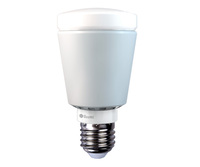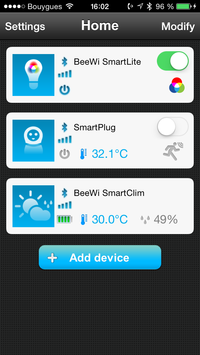Nobody says “there’s an app for that” any more, but that doesn’t mean it isn’t true. The mobile app revolution has affected just about everything, it seems, right down to the light bulb in my study lamp.
Does LED technology really help reduce electricity bills?
My condominium board (I serve as treasurer) is currently debating whether to update light bulbs throughout the building. We’re thinking of targeting incandescent bulbs in particular and replacing them with LEDs.
The payback on this idea doesn’t seem assured for several reasons.
- LEDs cost so much that we have to ask how long it would take for energy savings to at least match the cost of the bulbs.
- Energy cost savings would take lots longer to realize if the fixtures only stay on for two to four hours a day. LEDs might make sense in our hallways, main lobby, elevator lobbies and other places where the lights stay on 24/7, but the payback on swapping out bulbs in people’s suites is questionable at best.
- We can’t simply hand out one type of bulb to residents for use in their suites. The number of different fixtures available means no one bulb type will fit all light fixtures.
- We’d lose the bulbs (and the energy savings) if residents move out and take their floor lamps, desk lamps and other non-fixed lighting appliances with them, LEDs and all. (This isn’t as likely to happen if they leave fixtures in the ceiling.)
- Our superintendent tells me that at least six of the LEDs lighting the property outdoors have already burned out. (We replaced the light poles and fixtures a few years ago.) These $250.00 bulbs are warranted for five years, so we have yet to pay for any replacements, but the numbers are high enough to give one pause.
Clearly we need to think this through before we move ahead.
This was one of the projects on my mind when French company BeeWi alerted me to their smart LED bulbs. This company plays in three main arenas: connected smart toys, connected smart audio (an area I’m increasingly interested in – I’m reviewing a SONOS speaker) and connected smart home (I want to try a Nest thermostat). In my view, the BeeWi represents the transfer of technology developed for industrial applications to the home, a trend I follow in other areas given my background as a technology copywriter and journalist.
Not long after a quick exchange with their press agent, I received a Smart LED Color Bulb rated at 7W. That’s a whole lot less than the 60-watt incandescent bulb fitted into one of the lamps on my desk, so into that lamp it went.

A BeeWi LED bulb. It looks simple on the outside…
First impressions: a programmable LED bulb
The light is pleasant enough when the bulb first lights up, at its default settings (more on that later).
I could hold the bulb with my bare hands 10 to 15 minutes after I turned it on. (To unscrew the incandescent bulb from my desk lamp, I had to grasp it with a T-shirt to keep from scalding my fingers.)
This bulb is pricey enough that if I were to buy more of them, I’d want more from them than energy efficiency. And here’s where things get interesting.
Programming the bulb
Owners can control the intensity or colour (White or RGB) of a BeeWi bulb. (Returning to the matter of heat: the LED bulb does heat up if you turn the intensity way up, but it cools down quickly when you dial the intensity back down.)
Bulbs can also be programmed to turn on each morning for what the press materials call a “gentle awakening.” This sounds better than an alarm clock. You can also set the bulb to “sleep” using a timer.
To change a bulb’s settings, an owner must first download BeeWi’s SmartPad application. Once the bulbs pair (effortlessly, in my experience) with the app, the owner is set to control a single bulb or groups of bulbs. The app enables the owner to organized sets of bulbs into groups (e.g. living room, kitchen) and modify their settings all at once.

… but the bulb communicates with this app, allowing you to change its behaviour wirelessly.
The bulbs feature Bluetooth Low Energy, so the energy cost savings from LED technology aren’t lost on the wireless connection. The documentation says the connection is good to between 30 and 50 metres. (The connection also works on non-low-energy Bluetooth devices like my 3rd-generation iPad.) Each time the bulb receives a setting change that doesn’t require a change in appearance, the bulb quickly flashes to acknowledge receipt.
The lighting itself is much “nicer” than anything you’ll get from non-programmable bulbs. And if you don’t like how it looks out of the box, or your mood changes, the lighting changes after just a few taps and swipes.
Another bonus: the BeeWi gives off every colour of light on the spectrum. And the SpartPad app offers rudimentary “playback” through a sequence of preprogrammed colours. A BeeWi-equipped room could transform itself for a Christmas-themed green and red (and blue) gathering.
A smart home app
The SmartPad app doesn’t stop there. It also enables control of other BeeWi home accessories. Programmable electrical outlets and temperature and humidity sensors were mentioned in the press release that alerted me to BeeWi’s arrival in Canada. The app also enables owners to update the bulb’s firmware.
Controlling house lights (or other BeeWi gear) remotely (i.e. outside Bluetooth range) calls for BeeWi’s Smart Internet Gateway (sold separately) that plugs into a router. It receives settings over a WiFi network and transmits them via Bluetooth to BeeWi products.
My concerns
All this sounds great, but in the hands of people who don’t do lighting design (like yours truly) much of this rings esoteric. Brightness? I know what it is, but what’s the right level of brightness for me? Colour temperature? Not sure what that means, but the box tells me it can range between 3000k and 6000k.
I could look up this information, since these things are well outside my sphere of knowledge. But I won’t look it up. I wouldn’t spend time needlessly tinkering with lighting settings, even if I did understand the science. Nor would many of the less tech-savvy residents in my condominium, like my ailing 102-year-old neighbour.
Making the apps available on a variety of mobile platforms is a great idea, but an old school type (like me) would appreciate a client for my computer too.
An idea
Maybe BeeWi could guide owners towards the right settings for their environments. Even better: they might get together with the people at f.lux to create automated lighting controls that do the body good.
F.lux controls the lighting on my computer monitors so that as the sun sets, the screens emit less blue light. (Exposure to blue light before bed is thought to interfere with sleeping.)
This isn’t the only type of lighting automation I’d want, but having the bulbs create widely acceptable conditions automatically throughout the day would be a great start.
Pricing
The BeeWi model I tested, the Bluetooth Smart LED color Bulb E26 7W A19 (BBL227), costs $44.99. The press release also mentioned:
- Bluetooth Smart LED color Bulb 4W GU10 (BBL014): $ 34.99
- Bluetooth Smart LED color Bulb E26 9W A19 (BBL229): $ 49.99
For what it’s worth, the company claims life expectancy of 15,000 hours, or 20 years, for each bulb.
Thoughts on costs
Technology appropriate for condominiums seems to fall into a vaguely defined area between full-on industrial technology and simplified home technology. We would like the benefits of industrial tech while paying prices closer to those you’d find at home improvement stores.
That’s one reason why I believe I’d have difficulty talking my condo board into this type of investment. (Another reason? I’m not yet sold on it either.) Beyond the price per bulb, we’d need BeeWi’s gateways so the bulbs could be remotely controlled by the property manager or superintendent. Installing gateways would entail running wire and installing routers to create the required Internet connection. We might need to set up a building-wide network first (an idea we’ve discussed).
The final bill on this work would be hefty. Our reserve fund ought to cover the bulbs, but I’m not sure about the rest of the hardware. I don’t know whether bulk discounts on any of BeeWi’s products would lessen the expense enough.
Thoughts on programmable LEDs
Programmable LED bulbs, however, are the way to go, and for reasons that you might not guess. A friend of mine, a director on her downtown condo’s board, told me of their experience going LED. It seems the light from the LED strips they started to install doesn’t please everybody in the building. The board paused the project and she spent a December evening touring the hallways of her 28-storey condo building to gather information for next steps. This is one joy of condo board membership I’d gladly avoid, and we could if our property manager and superintendents could change the quality of the lighting remotely.
I expect we’ll be pitched smart home devices like this, so I appreciate knowing what’s on the market. And as people’s familiarity with these devices improves and the costs fall, I expect design-minded people to jump onto programmable LEDs. From what I’ve seen so far, the results can be stunning.